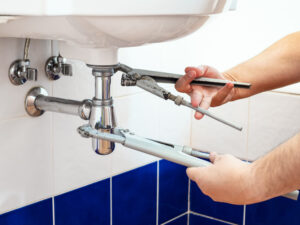How to Use DWV Systems, Copper Tubing, and a Drainage System in Plumbing
Plumbing is the conveyance of fluids for a variety of applications. It makes use of pipes, valves, plumbing fixtures, tanks, and other apparatuses. To learn more about plumbing, read articles about DWV systems, PEX, and copper tubing. These articles will help you understand the different kinds of plumbing and how to use them properly in your home.
There are several different parts of the home plumbing system. One is the water supply line. Another is the drainage system. These two lines work together to bring water into and remove wastewater from your home. Although these two systems are seemingly simple, they are actually more complicated than most homeowners realize. Read on to learn more about the different parts of your home plumbing system.
The two basic systems of the home plumbing system are the main water supply line and the sewer system. The main water supply line brings water into your house under pressure, which is then pumped to your sinks and toilets. The drain line, on the other hand, transports waste water to a city sewer system or an on-site septic tank.
The water supply system in your home must be safe and properly drained. It must have the right fixtures that do not contaminate the water. The drainage system is necessary to move waste away from home, and it must protect occupants from waste backing up. Understanding the plumbing systems of your home will allow you to easily repair problems in your own home. Learning how to repair problems in the home plumbing system can save you money and time.
The home plumbing system uses traps and vent pipes to prevent sewer gases from entering your home. Sewage gas is dangerous and can carry microbes if it is inhaled. In the long term, it can be carcinogenic. Because of this, it is important to install a plumbing trap on any fixtures that connect to the household plumbing system.
Copper tubing comes in various thicknesses and types. Type M copper pipe is the most affordable type and is usually used for indoor plumbing. It is also used in applications like fire protection, HVAC, and fuel oil. It is thick enough to withstand high water pressure and is also available in 3/8-inch diameters.
Copper is an elemental metal with high thermal conductivity and electrical conductivity. It has been around for at least 10,000 years. Humans have used copper for everything from wires and cookware to roofs and jewelry. It is no wonder, then, that copper is an excellent material for plumbing. Its use in plumbing dates back as far as 5,000 years.
Copper tubing for plumbing comes in two different forms: rigid and flexible. Rigid copper is used for water lines. Rigid copper is also known as “pipe” or “tubing.” Depending on the size and inner diameter, copper “piping” can be joined by soldering, crimping, or roll-grooved connections. Rigid copper cannot be bent easily and must be attached to other pipes with elbow fittings.
Copper pipe is one of the most popular types of pipe. It is available in rigid and soft copper. It offers excellent corrosion resistance and reliable connections. However, more people are switching to flexible PEX for new constructions because it is more cost-effective. PEX can also be used outdoors, and it is not susceptible to freezing.
There are two main types of copper pipes – type M and type L. Both have benefits and drawbacks. Type M is the most commonly used type in residential plumbing, while Type L is typically used for commercial applications and gas lines. Type M pipes are thinner than Type L but may not last as long.
PEX for plumbing is an excellent choice for re-piping, especially in older buildings, historical structures, and commercial projects. However, it is not yet a substitute for copper in all applications. In general, the diameter of PEX pipes is too small for larger pipe systems and commercial projects. Additionally, copper has a proven track record for stability in the plumbing industry. Commercial professionals often need a solution that is durable and cost-effective.
PEX tubing is available in three different types, and each has its own advantages. While all three meet the applicable standards for plumbing, they differ in cost and flexibility. For example, Type A has higher strength and is more pliable than Type B. Both types can be used with potable water. If you’re unsure about which one to choose, consult the manufacturer’s instructions before making the decision. PEX for plumbing has many advantages, so consider it for your home improvement project.
